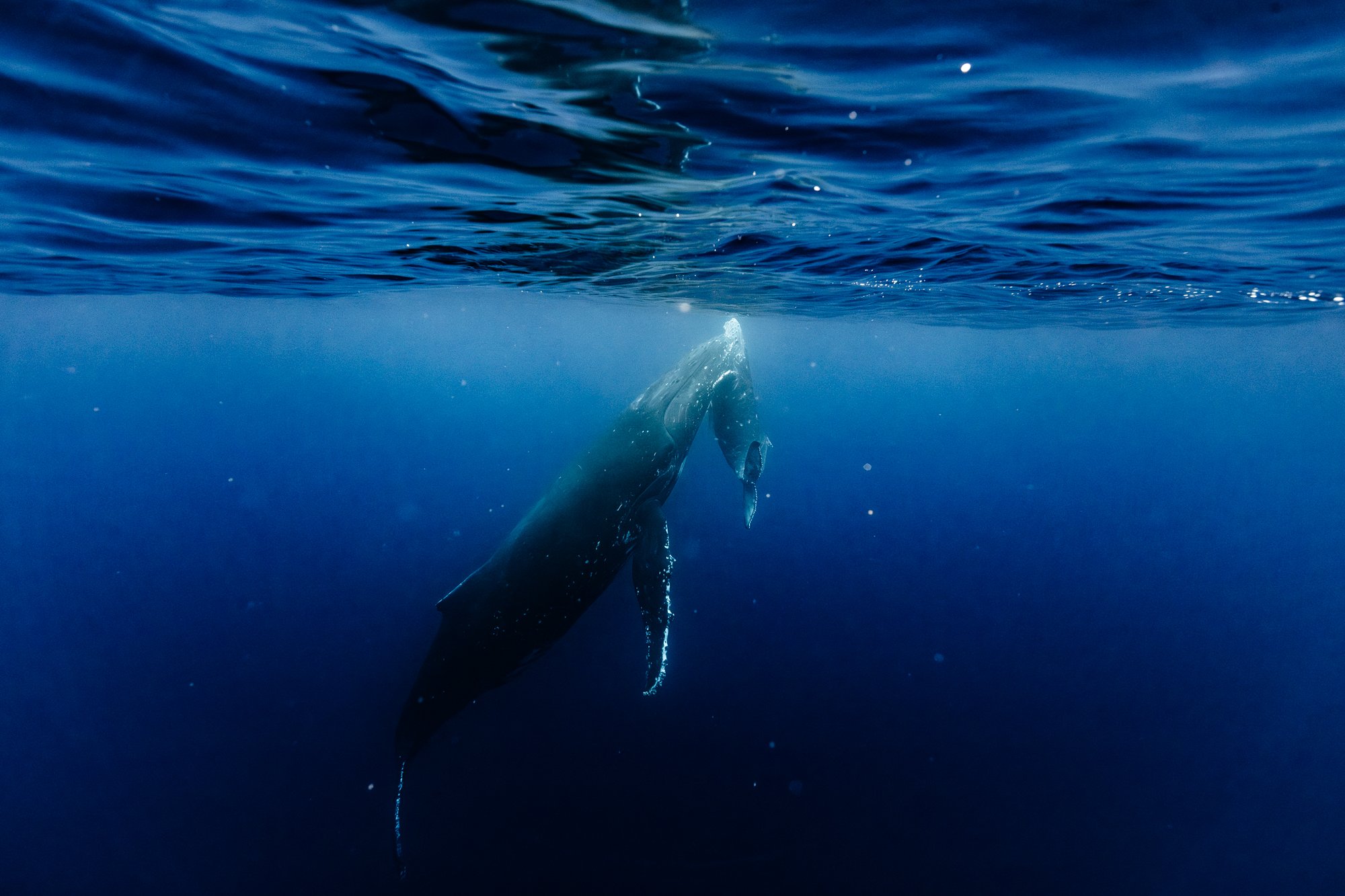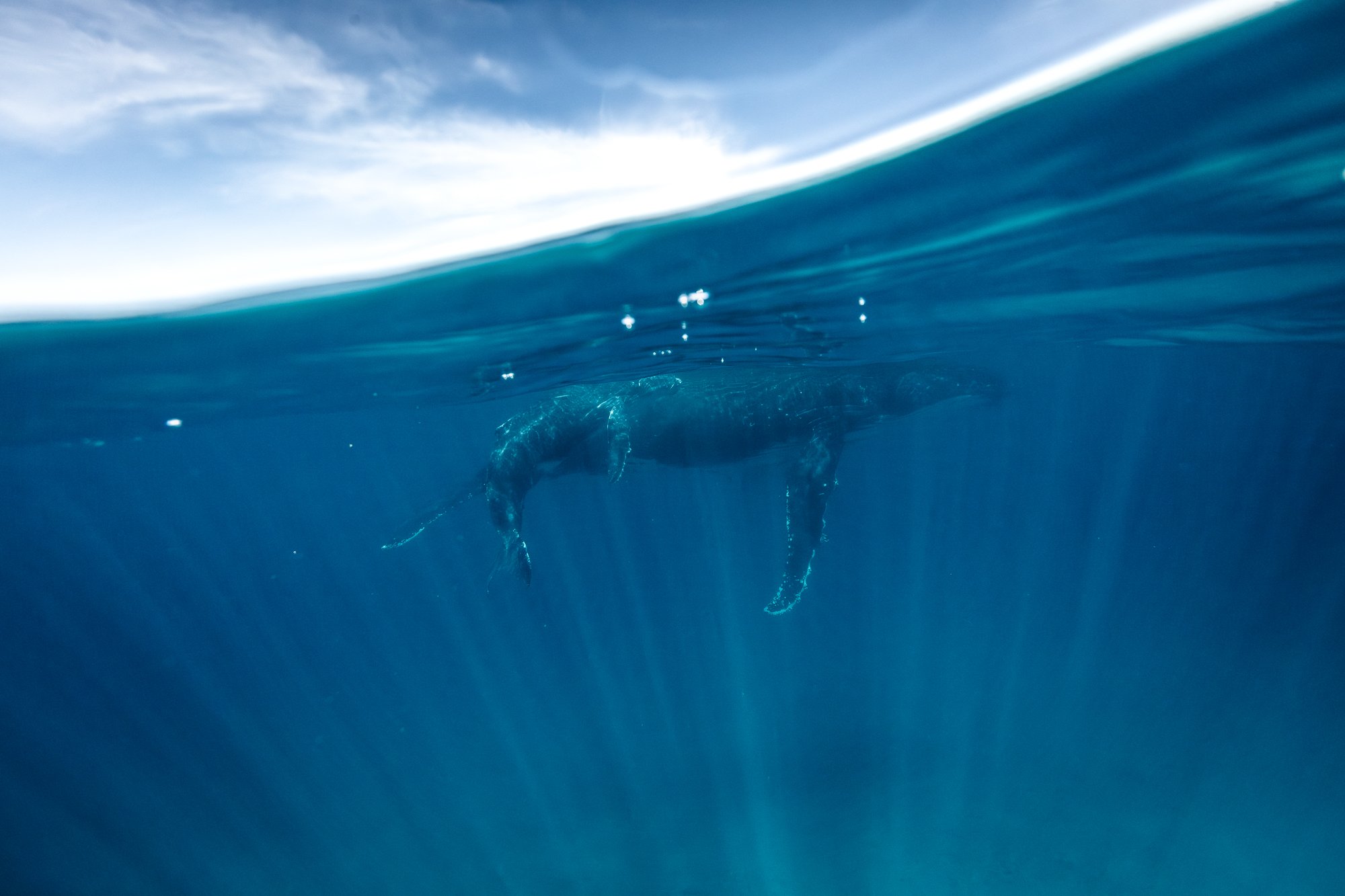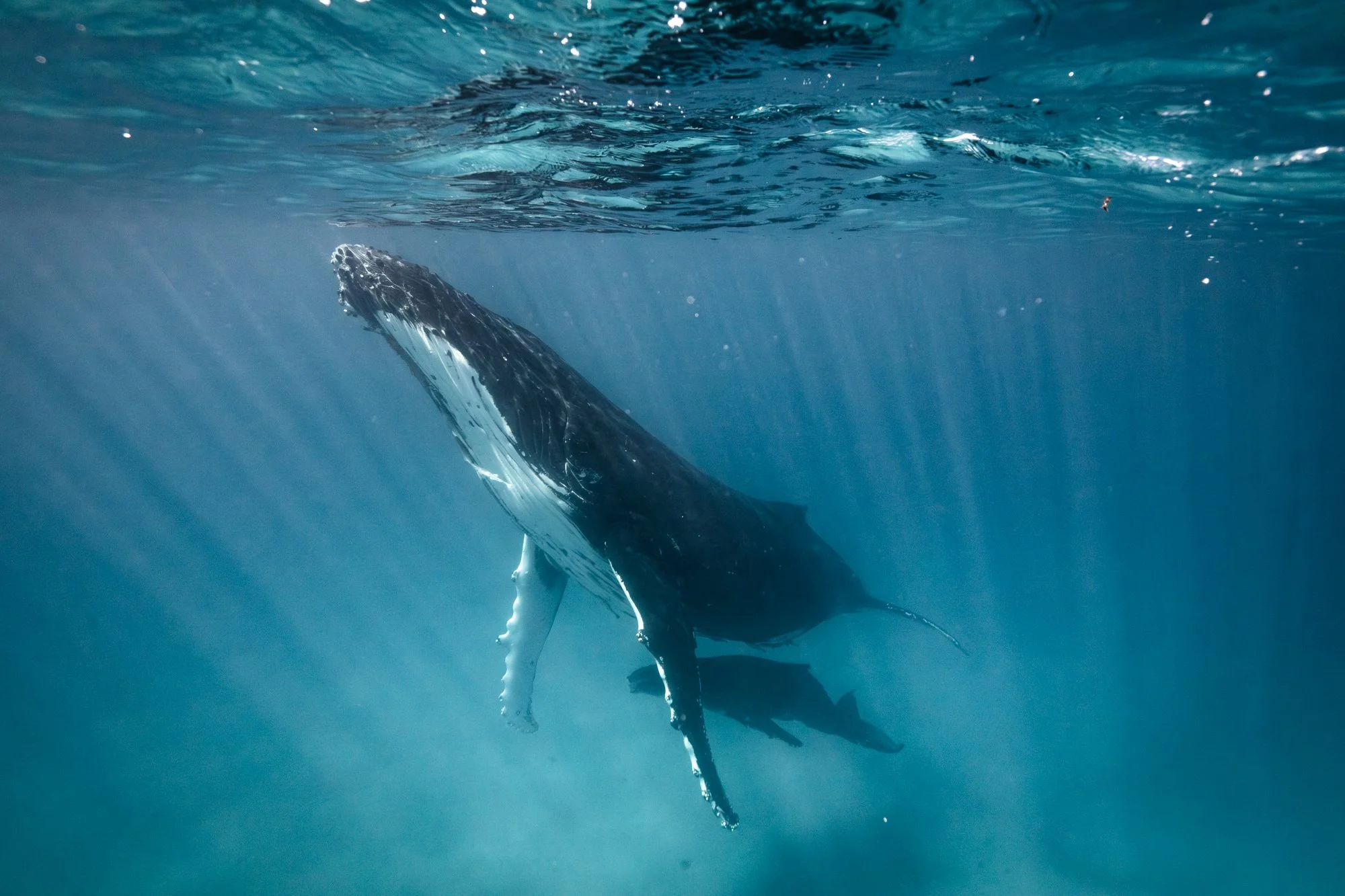The Whale Corridor
A globally recognized corridor
Linking a series of marine protected areas (MPAs)
Providing safer passage for humpback whales.

A Pathway for the Whales:
A Globally Established Migratory Corridor
A globally recognized corridor can link a series of marine protected areas (MPAs) providing safer passage for humpback whales.
This “Pathway for the Whales” will act as a safeguarded route for whales to migrate with reduced risks.
Designated marine corridors help avoid high ship-traffic areas and vessel speed restrictions can reduce collision risks. Alerting ships to whale-presences, allows them to alter their paths or slow down accordingly.
The corridor could enforce regulations on fishing activities in designated areas.
The use of whale-safe gear or seasonal restrictions on certain types of fishing can decrease entanglements, especially during peak migration periods when whales are most vulnerable.
By connecting MPAs, a migratory corridor would protect key feeding and breeding areas, allowing humpback whale populations to adapt to changing oceanic conditions.
These MPAs could be managed with conservation efforts specifically tailored to maintain krill populations and other essential aspects of the whales' habitat.
MPAs in the corridor can implement regulations on pollution and waste management.
This can mitigate the impacts of plastic and chemical pollution along the whales’ migratory route for a cleaner and safer environment on their journey.
Establishing a migratory corridor takes international cooperation, bringing together nations, organizations, and conservationists.
A collaborative effort meaning stronger global regulations and shared strategies for addressing threats to humpback whales.
A globally recognized migratory corridor for humpback whales could serve as a lifeline.
Connecting protected areas can ensure safe passage from breeding to feeding grounds.
Reducing human-induced threats and fostering international collaboration can better safeguard these majestic creatures and preserve their populations for generations to come.
A protected pathway for humpback whales from Tonga to the Antarctic Ocean helps mothers and their calves.
The journey is long and perilous, particularly for young calves, highly vulnerable and dependent on their mothers.
Establishing a pathway that links together a series of marine protected areas (MPAs) can provide a safer environment for these mother-calf pairs as they navigate the challenges of migration.







You can support the Whale Corridor:
We need your financial support to work with relevant stakeholders to establish the Whale Corridor,
Collaborating with academics and organizations in the United States and Tonga,
Conducting ground breaking research on humpback whale behavior,
Supporting teams of award winning international media professionals producing a documentary covering the beauty and journey of humpback whales and the climate induced perils they face during their 6,000 km journey across the Pacific between Tonga and Antarctica.
